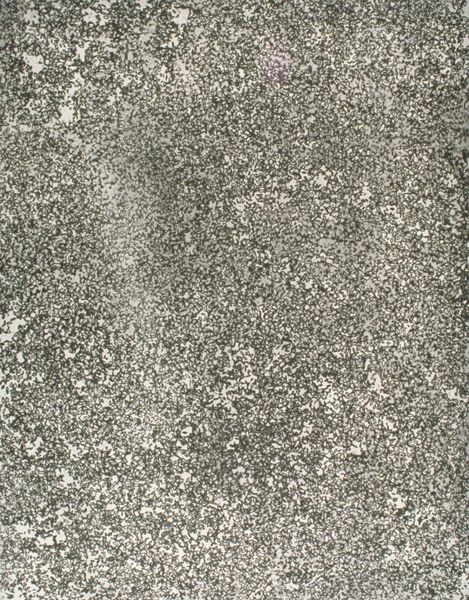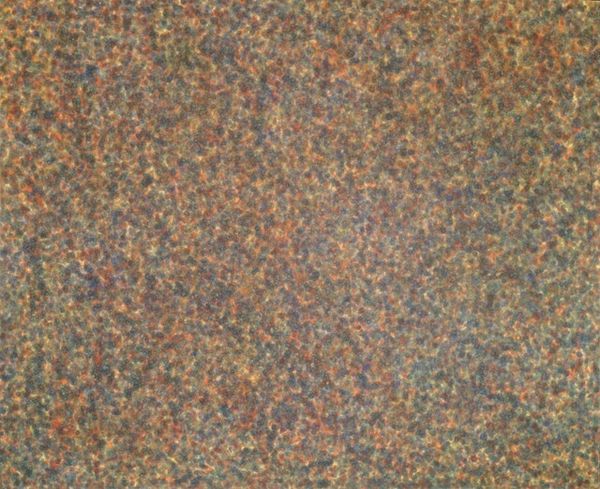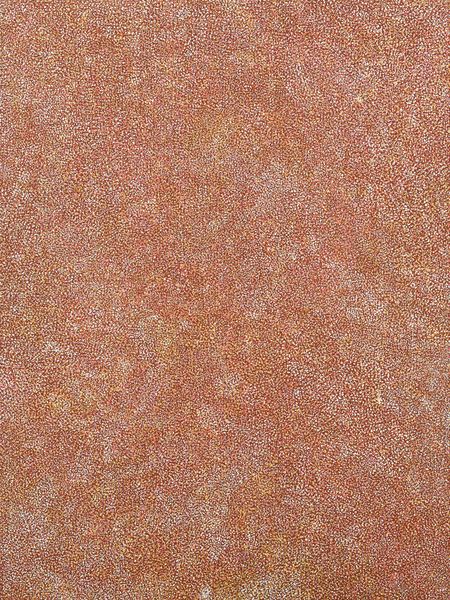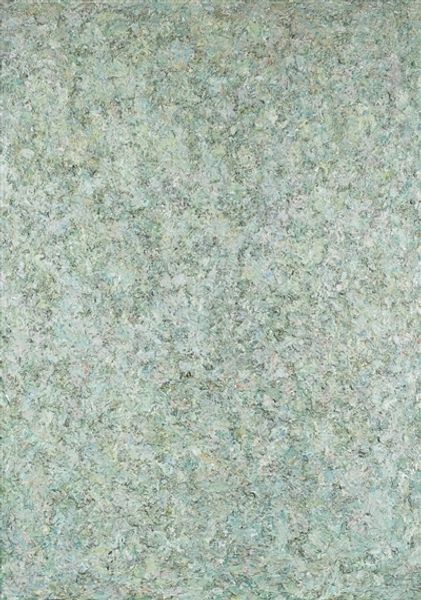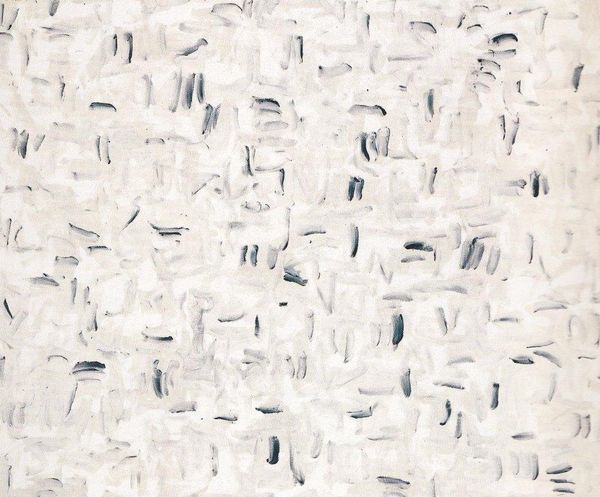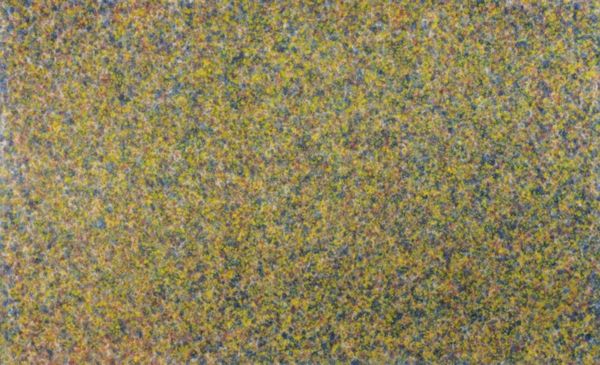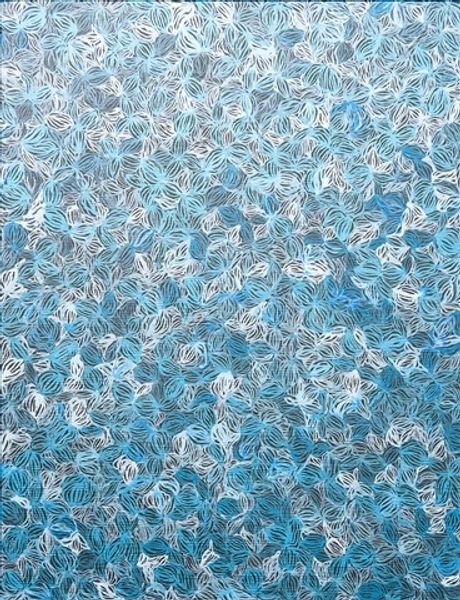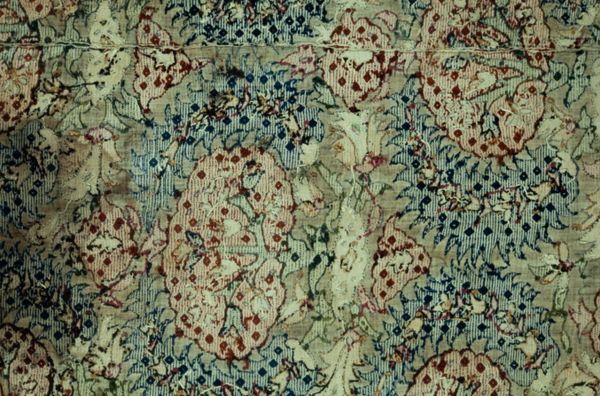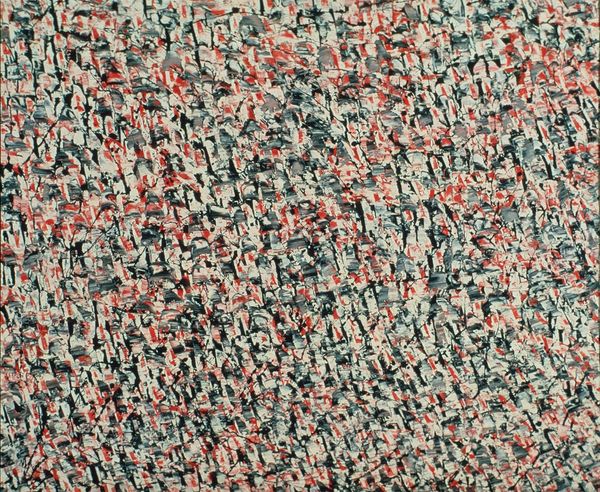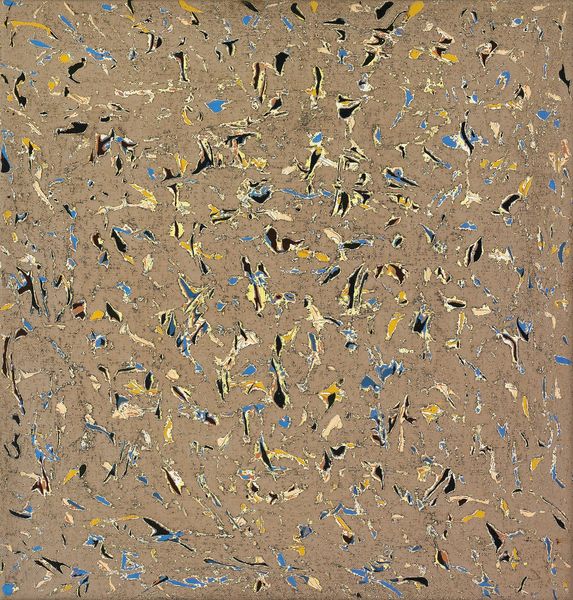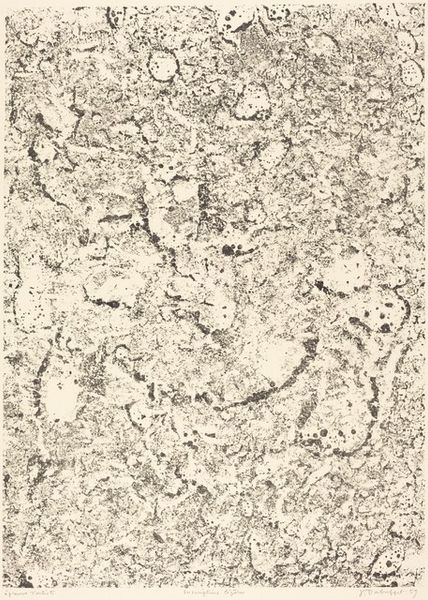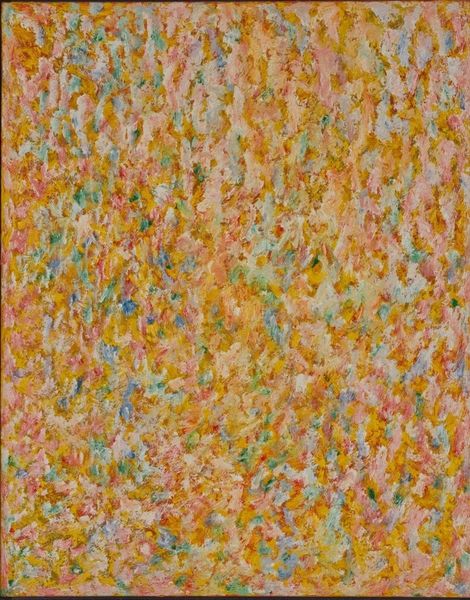
Dimensions: support: 1135 x 905 mm frame: 1157 x 930 x 55 mm
Copyright: © The estate of Mark Tobey/DACS 2014 | CC-BY-NC-ND 4.0 DEED, Photo: Tate
Curator: Mark Tobey's "Northwest Drift," held here at Tate Modern, presents us with an all-over composition in cool hues. Editor: It feels like a blizzard rendered in paint; a beautiful, muted chaos. Curator: Tobey was deeply influenced by his travels in Asia, particularly Zen Buddhism and calligraphy. We might view the abstract white lines as representing the interconnectedness of all things, set against the backdrop of mid-20th century anxieties about social conformity. Editor: Yes, and the overlapping marks evoke a sense of spiritual unity, a visual mantra that reflects the collective unconscious. The color choices further the emotional impact, with blues traditionally symbolizing serenity and contemplation. Curator: Precisely. It encourages us to reconsider the boundaries between the personal and the political, the individual and society. Editor: It's fascinating how Tobey transforms personal experience into a symbolic language, inviting each viewer to discover their own meaning within the drift.
Comments
tatemodern 6 months ago
⋮
http://www.tate.org.uk/art/artworks/tobey-northwest-drift-t00463
Join the conversation
Join millions of artists and users on Artera today and experience the ultimate creative platform.
tatemodern 6 months ago
⋮
Northwest Drift is a meditative response to Seattle’s grey and hazy landscape. Yet, as Tobey once remarked, ‘The Orient has been the greatest influence’ of his life. In 1918, he converted to the Baha’i faith and sought to explore the spiritual in his art and an alternative to surrealism’s automatism. His interest in calligraphy began during his eastern Mediterranean trip in 1926. After studying calligraphy and practising meditation at a Zen monastery near Kyoto in 1934, he developed his signature ‘white writing’ style. Built on thousands of interlaced white lines, this technique forms a calligraphic mesh on the surface. Gallery label, March 2025
